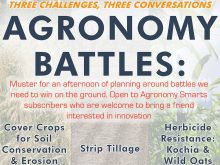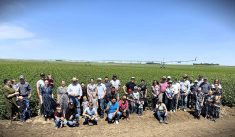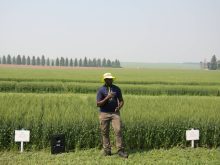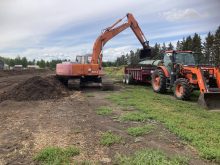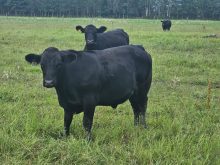The feds are putting up $33 million to encourage Alberta farmers to adopt three practices that can lower greenhouse gas emissions: rotational grazing, 4R fertilizer practices, and cover cropping.
Alberta’s share of the $183-million On-Farm Climate Action Fund program is being administered by Results Driven Agriculture Research, the provincial research funding agency.
Although details are still being worked out, the criteria is quite general for the cover crop portion of the program, said Mark Redmond, chief executive officer of RDAR.
Read Also

Moo translator and methane measures: There’s an app for that
Dalhousie University researchers use artificial intelligence to create new dairy farm apps that analyze cattle sounds and measure methane.
“At this time, we have a broad agreement,” he said. “The project can be described as a benefit if there is cover cropping or intercropping. We’re into the protection of the soil, and building up the health of the soil.”
The cover cropping grants would include items such as seed costs or could be a per-acre payment, according to an FAQ document on RDAR’s website. Purchase of equipment is not eligible but rental is.
Because cover cropping is not widely practised in Alberta, the goal is to encourage producers to try the practice and see what works on their farm and in their area, said Redmond.
“In terms of talking about cover crops, our objective is to try to get as broad a range of best management practices to those distinct regions we have in the province, and get people to explore those,” he said. “The potential is with applied research associations, groups and colleges. They have the equipment. If someone has an idea, and they’re short of equipment, we’ll have partner organizations on the ground that could potentially help producers that way.”
Eligible costs will be covered on an 85-cents-on-the-dollar basis, with up to $75,000 available per farming operation.
Preliminary info on all three practices eligible for On-Farm Climate Action Fund (OFCAF) grants can be found at rdar.ca. There’s a link on the home page that leads to the short FAQ document but producers are encouraged to sign up for both an OFCAF e-newsletter and OFCAF updates (which will also be sent by email). Application forms will be available this spring, the FAQ document states.





